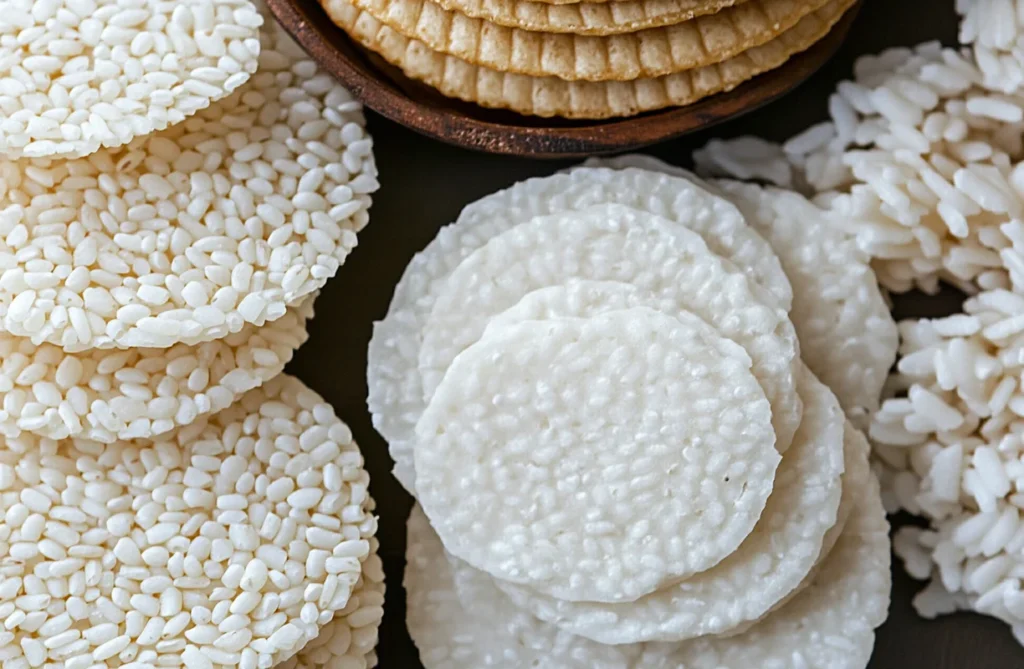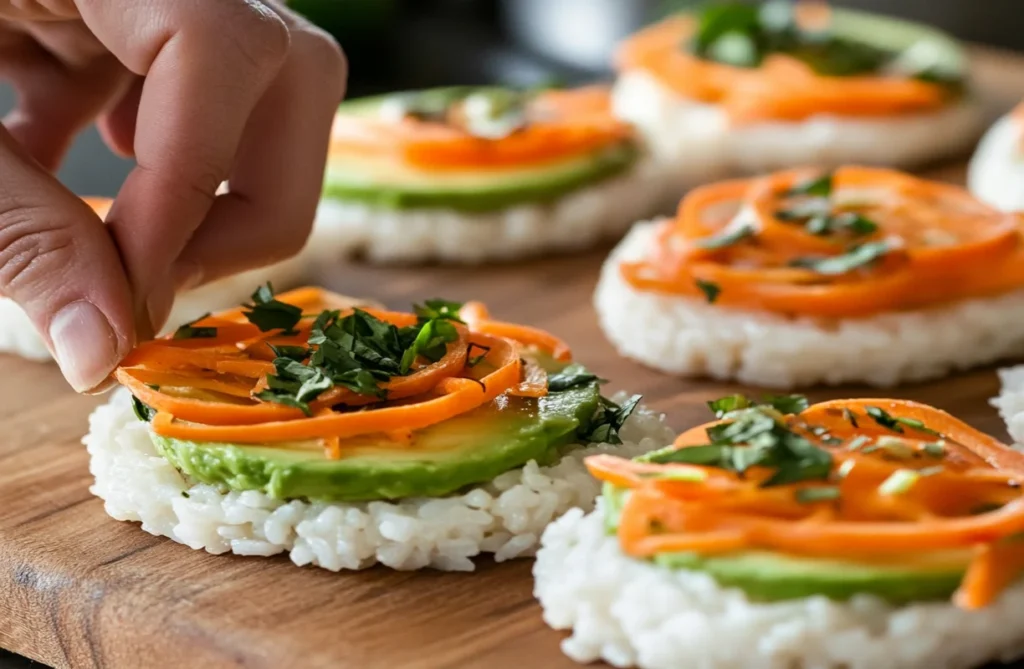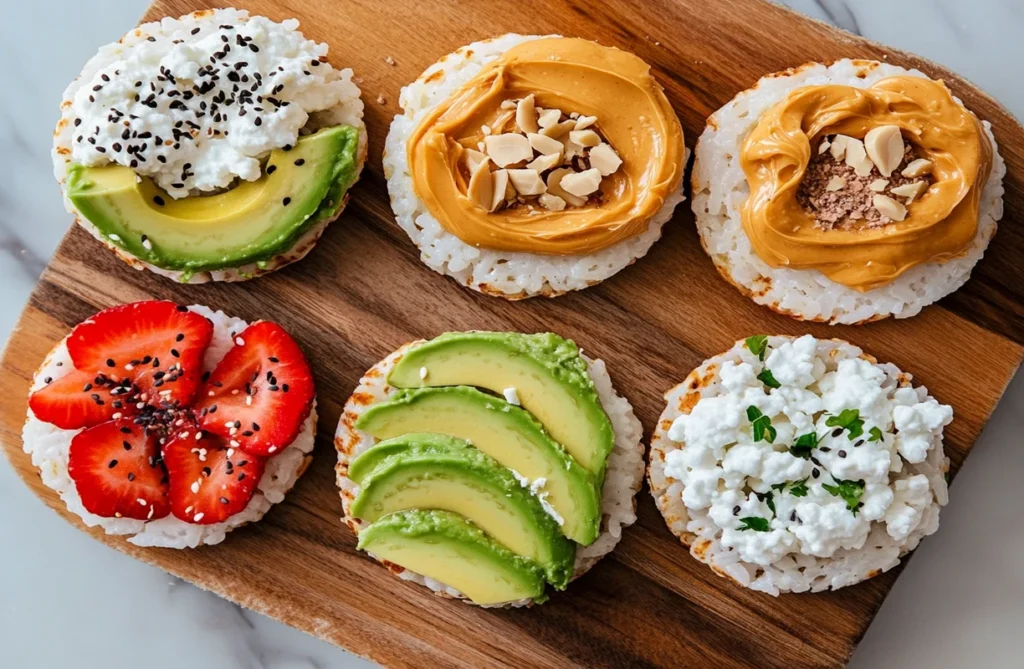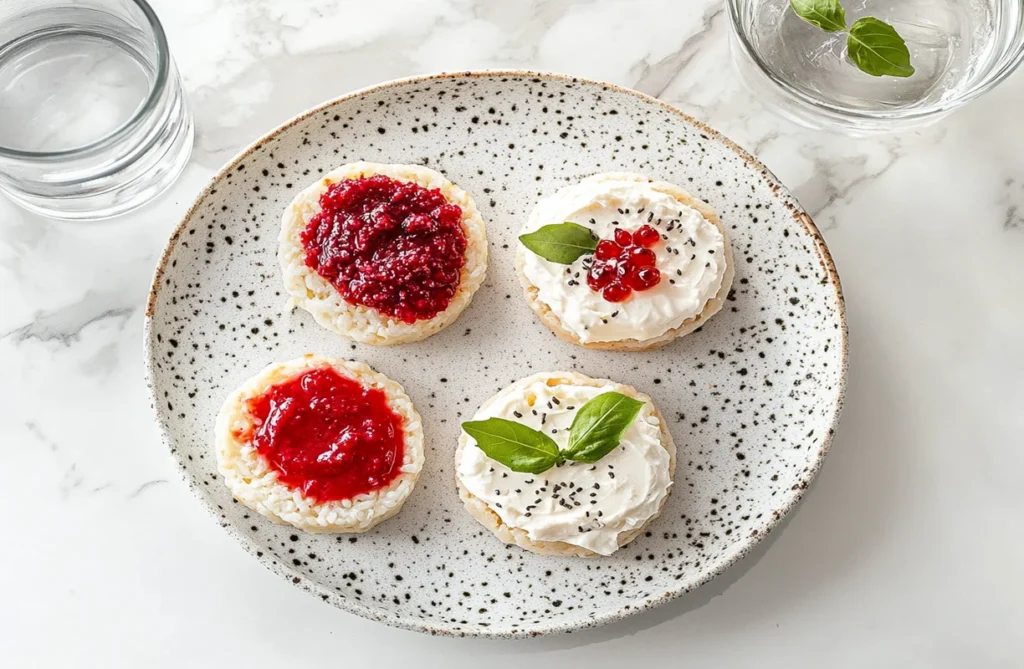Rice cakes have become a popular snack for people striving to maintain a healthy lifestyle. Known for their low-calorie content and versatility, rice cakes often find their way into weight-loss diets. But are they truly effective in targeting belly fat? In this article, we’ll dive deep into the nutritional profile of rice cakes, explore their benefits and drawbacks, and provide practical tips for incorporating them into your diet to achieve weight-loss goals.
Stay tuned as we uncover whether rice cakes are a snack worth keeping in your pantry or just another diet myth!
Nutritional Breakdown
What Are Rice Cakes Made Of?
Rice cakes are a simple snack made primarily from puffed rice. They are created by compressing grains of rice into a disc shape using heat and pressure. While plain rice cakes are often made from just rice and salt, they can be a part of a losing weight strategy when chosen wisely. You can also find flavored varieties that include seasonings, sugar, or artificial additives.
The simplicity of their ingredients makes rice cakes a popular choice among health-conscious eaters. However, when it comes to losing weight, the nutritional value of rice cakes depends heavily on the type of rice used (brown or white) and any added ingredients.
Brown Rice Cakes: These are made from whole-grain rice, providing a slight boost in fiber and micronutrients.
White Rice Cakes: Made from refined rice, they tend to lack fiber but are still low in calories.
3. Calories and Macronutrient Content in Rice Cakes
Understanding the nutritional content of rice cakes is key to determining their role in weight loss. Below is a typical breakdown of one plain rice cake (9 grams):
- Calories: 35–40 kcal
- Carbohydrates: 7–8 grams
- Protein: Less than 1 gram
- Fat: 0 grams
- Fiber: 0.2 grams
While rice cakes are low in calories, they are primarily a source of carbohydrates, with minimal amounts of protein and fiber. This can make them less filling compared to other snacks, potentially leading to overeating if not consumed mindfully.

Why This Matters for Belly Fat
To lose belly fat, it’s crucial to focus on calorie control and nutrient density. Rice cakes can fit into a low-calorie diet, but their low protein and fiber content means they don’t do much to keep you full. For those focused on losing weight, pairing rice cakes with nutrient-rich toppings can make them more effective as part of a weight-loss plan.
Part 3: Weight Loss Considerations
4. Can Rice Cakes Help Burn Belly Fat?
Rice cakes alone do not have any magical fat-burning properties. However, they can be a useful tool in a calorie-controlled diet. For those focused on losing weight, belly fat loss primarily depends on creating a calorie deficit—burning more calories than you consume. Since rice cakes are low in calories, they can serve as a lighter alternative to calorie-dense snacks like chips or cookies.
But there’s a catch:
- Low Satiety: Due to their low protein and fiber content, rice cakes are less likely to keep you full for long, which might lead to overeating.
- Blood Sugar Spikes: Rice cakes have a high glycemic index (GI), meaning they can cause quick spikes in blood sugar. These spikes can lead to energy crashes, making you crave more food soon after eating.
What Does This Mean for Belly Fat?
Controlling blood sugar and hunger levels is key to losing belly fat. To make rice cakes work for you, combine them with low-GI, high-protein toppings like hummus, cottage cheese, or almond butter.
5. Rice Cakes vs. Other Snacks for Weight Loss
Rice cakes may be lower in calories compared to many snacks, but are they always the better choice? Let’s look at a comparison:
| Snack | Calories | Protein | Fiber | Satiety |
|---|---|---|---|---|
| Rice Cakes (1) | 35–40 | <1g | 0.2g | Low |
| Almonds (10) | 70–80 | 3g | 1.5g | High |
| Banana (Medium) | 105 | 1g | 3g | High |
| Granola Bar (1) | 150 | 2g | 2g | Moderate |
While rice cakes have fewer calories, their low protein and fiber content means they fall short on satiety. For weight loss, combining rice cakes with healthy toppings is a better strategy than eating them plain.

Tips for Smart Snacking
- Balance with Toppings: Add lean proteins, healthy fats, or fiber-rich spreads to rice cakes to make them more filling.
- Portion Control: Stick to 2–3 rice cakes per serving to avoid excessive carb intake.
- Mindful Eating: Pair rice cakes with other foods during meals to slow digestion and improve satiety.
Part 4: Health Benefits and Drawbacks
6. Benefits of Eating Rice Cakes for Weight Loss
Rice cakes offer several advantages when incorporated into a weight-loss plan, particularly for those focused on reducing belly fat:
- Low in Calories: At just 35–40 calories per rice cake, they make it easier to control overall calorie intake, a key factor in losing belly fat.
- Gluten-Free Option: Most rice cakes are naturally gluten-free, making them suitable for individuals with gluten intolerance or celiac disease.
- Versatile Base: Their mild flavor pairs well with nutrient-rich toppings, allowing you to create balanced snacks or light meals.
- Portable Snack: Lightweight and easy to pack, rice cakes are convenient for on-the-go snacking.
Pro Tip: Opt for minimally processed, whole-grain rice cakes to maximize their health benefits.
7. Common Downsides of Rice Cakes
While rice cakes have their perks, they are not without drawbacks, especially when it comes to promoting satiety and overall nutrition:
- Low Nutrient Density: Rice cakes are primarily a source of simple carbohydrates and lack essential nutrients like protein, fiber, and healthy fats.
- High Glycemic Index: They can cause rapid spikes in blood sugar levels, which might hinder fat loss by increasing hunger and fat storage over time.
- Lack of Satiety: Eating plain rice cakes may leave you feeling hungry shortly after, potentially leading to overeating.
- Overeating Risk: Their light and crispy texture makes it easy to eat more than intended, which can counteract the calorie-saving benefit.
How to Overcome These Drawbacks
To make rice cakes a healthier option:
- Add Protein and Fiber: Spread almond butter, hummus, or mashed avocado on top.
- Choose Whole-Grain Varieties: Brown rice cakes provide more fiber and nutrients than white rice cakes.
- Limit Processed Add-Ons: Avoid flavored rice cakes with added sugar or artificial ingredients.

Balanced Approach
Rice cakes can fit into a belly fat reduction plan when eaten in moderation and paired with nutrient-rich foods. However, relying solely on them for snacks or meals may not provide the nutritional support needed for sustainable fat loss.
Part 5: Incorporating Rice Cakes Into a Belly Fat Reduction Plan
8. Best Toppings for Rice Cakes to Lose Belly Fat
Rice cakes are like a blank canvas—what you add to them makes all the difference in their ability to support losing weight. Here are some healthy topping ideas that boost their nutritional value and keep you full:
- Avocado Slices: Rich in healthy fats and fiber, avocados provide satiety while promoting fat metabolism.
- Hummus with Veggies: Hummus adds protein and fiber, while toppings like cucumber, carrots, or bell peppers enhance crunch and nutrients.
- Peanut or Almond Butter: A small serving of nut butter provides healthy fats and protein. Pair with banana slices for extra flavor and energy.
- Cottage Cheese and Berries: High in protein, cottage cheese helps build lean muscle, and berries are loaded with antioxidants.
- Egg and Spinach: Add a boiled or poached egg with a sprinkle of spinach for a protein-packed, low-calorie snack.
Pro Tip: Avoid high-sugar toppings like jam or flavored syrups, as they can negate the benefits of rice cakes.

9. When to Eat Rice Cakes for Best Results
The timing of your meals and snacks can influence weight loss. Here are some ideal moments to incorporate rice cakes into your routine:
- Pre-Workout Snack: Their quick-digesting carbs provide an energy boost before exercise. Add peanut butter for sustained energy.
- Post-Workout Recovery: Pair with a protein source like cottage cheese to refuel muscles and restore glycogen levels.
- Mid-Day Snack: Avoid sugary snacks by replacing them with rice cakes topped with a mix of protein and healthy fats.
- Late-Night Snack: If you’re prone to late-night snacking, opt for rice cakes with a low-calorie topping like sliced cucumber to avoid consuming excess calories.
Pro Tip: Keep rice cakes as part of a balanced snack and avoid using them as meal replacements to prevent nutrient deficiencies.
10. Portion Control and Mindful Eating
Although rice cakes are low in calories, overindulging can still hinder weight loss efforts. Follow these guidelines for portion control:
- Stick to 2–3 Rice Cakes: This portion provides enough bulk to satisfy hunger without overloading on carbs.
- Pair with Water: Drinking water alongside rice cakes helps enhance fullness.
- Eat Slowly: Mindful eating practices, such as chewing slowly and savoring flavors, prevent overeating.

Tips for Sustainable Results
Rice cakes can play a role in a healthy diet, but they should not be the sole focus. Instead, use them strategically as part of a broader weight-loss plan that includes:
- Regular exercise, particularly strength training to burn fat.
- A balanced diet rich in lean protein, healthy fats, and fiber.
- Proper hydration and stress management to support overall health.
11. Do Dietitians Recommend Rice Cakes for Weight Loss?
Nutrition experts often view rice cakes as a neutral snack. While they can fit into a losing weight plan, dietitians typically emphasize that rice cakes need to be paired with other nutrient-dense foods to support satiety and overall health.
Key Takeaways from Dietitians:
- Rice cakes are a convenient, low-calorie snack but are not nutrient-rich.
- Combining them with high-protein, high-fiber toppings enhances their effectiveness.
- Moderation is essential to avoid over-reliance on processed carbs.
Pro Tip: Consult a registered dietitian to customize a meal plan that aligns with your weight-loss goals.
12. Scientific Studies on Rice Cakes and Belly Fat
Research directly linking rice cakes to belly fat reduction is limited. However, studies show that:
- Calorie Deficit Matters: Snacks like rice cakes can aid weight loss if they help you stay within your daily calorie limit.
- High-Glycemic Foods May Hinder Fat Loss: Consuming too many high-GI foods, like plain rice cakes, can lead to hunger and fat storage over time.
Including rice cakes in a balanced diet with low-GI foods helps regulate blood sugar and supports weight loss efforts.

Frequently Asked Questions (FAQs)
Q: What is rice cake made of?
Rice cakes are primarily made from puffed rice. The process involves heating and compressing rice grains into a disc shape, creating a light, crispy texture. For those focused on losing weight, plain rice cakes are a popular choice as they often contain only rice and a small amount of salt. Variations may include brown rice for added fiber or flavored versions with spices, sweeteners, or other additives.
Q: What do people put on rice cakes?
Rice cakes are highly versatile and can be topped with a variety of ingredients depending on taste and dietary goals. Popular options include:
- Savory Toppings: Avocado, hummus, smoked salmon, cottage cheese, or sliced vegetables.
- Sweet Toppings: Peanut butter, almond butter, banana slices, or a drizzle of honey.
- Protein Additions: Boiled eggs, grilled chicken, or turkey slices to make them more filling.
Q: Are rice cakes full of sugar?
Plain rice cakes typically contain no added sugar, but flavored varieties often include sweeteners, making them less suitable for weight loss or low-sugar diets. Always check the nutrition label to identify hidden sugars or high-fructose corn syrup in flavored options. For a detailed guide on rice cake varieties and their benefits, visit Rice Cakes: Varieties and Benefits.
Final Thoughts: Should You Eat Rice Cakes for Belly Fat Loss?
Rice cakes can be a helpful addition to a losing weight diet when used strategically. They are low in calories, versatile, and easy to prepare, making them a convenient snack for those aiming to reduce belly fat. However, their low nutrient content means they should be paired with high-protein and high-fiber foods for maximum effectiveness.
To achieve long-term results, rice cakes should be part of a comprehensive plan that includes:
- Balanced meals.
- Regular exercise.
- Proper hydration and sleep.
When eaten mindfully, rice cakes can help you stay on track with your weight-loss goals without sacrificing variety or convenience.